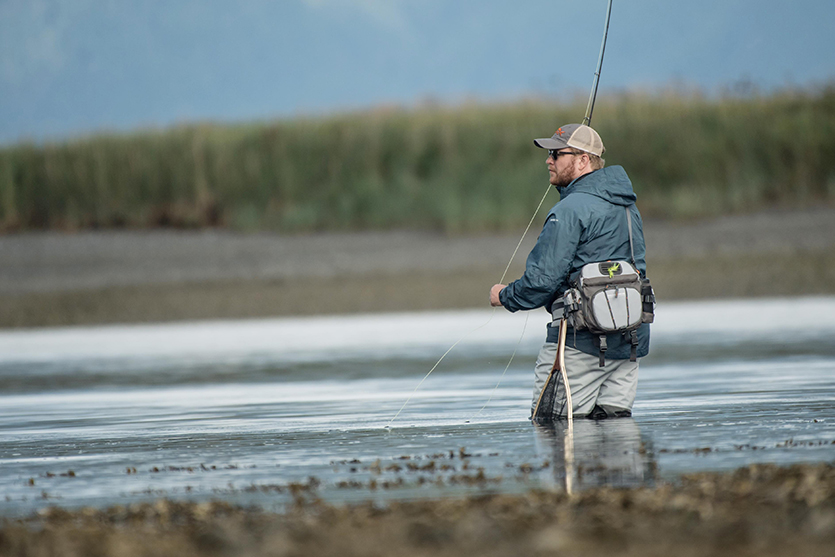Whether tackling shallow streams or commanding rolling rivers, a quality pair of fishing waders can significantly enhance comfort and efficiency on the water. There are numerous options and styles available to anglers, and matching these qualities to fishing conditions can enhance enjoyment with each cast.
Waders vary in height, material, and style, each with features designed for specific waterways. Use these fishing Pro Tips to select the right waders for the season.
Wader Height
When choosing fishing waders, consider the conditions where casting will occur. Will it be slow-moving water or a faster current? How deep will the streams be? To keep the line in the water regardless of the environment, three main wader heights are available: hip, waist, and chest.
Hip Waders: The shortest option for fishermen, resembling a pair of chaps with two separate legs that strap to a belt to prevent them from falling down while reeling in catches. Ideal for shallow streams or creeks with slow-moving currents, hip waders protect up to knee or lower-thigh height. They are also useful when launching boats, digging for clams, and hunting in swampy conditions.

Waist-High Waders: Also called wading pants, this option provides more coverage than hip waders and resembles baggy trousers worn with a belt or suspenders. Perfect for anglers venturing into mid-thigh-high water and those seeking unrestricted upper body motion.
Chest Waders: The tallest and most versatile wader option, chest waders are a one-piece garment with built-in suspenders allowing fishing in river levels as high as the chest. They are ideal for navigating new waters with unknown drop-offs and gullies or streams with faster currents. Chest waders also offer superior coverage for tackling both river depths and adverse weather conditions.
Bonus Pro Tip: Always wear a wading belt to prevent chest waders from flooding.
Wader Materials
There are three main materials for fishing wader construction: neoprene, rubber, and breathable nylon or polyester with a waterproof membrane. Each has its advantages and disadvantages, so consider the fishing conditions to ensure maximum comfort.
Neoprene: Ideal for colder temperatures, neoprene waders offer insulation and durability in rough waters. Thickness varies, with 3mm being optimal for general fishing and 5mm for colder climates. While warm and comfortable, neoprene is not breathable and may be too hot in warmer conditions. Thicker neoprene can also be buoyant, making movement in streams somewhat awkward.
Bonus Pro Tip: Neoprene waders are also excellent for waterfowl hunters due to their insulation and durability in marshes and swamps during hunting season.
Rubber: Rubber waders are highly waterproof and resilient to tears and punctures but lack breathability and range of motion. Often used in the boot portion of waders, rubber is common in hip waders, suitable for shallow yet rough waters.
Breathable Waders: Popular among fishermen, breathable waders are made from nylon or polyester with a waterproof membrane. Lightweight and versatile, breathable waders are available in all heights and are perfect for warm days, allowing moisture to escape while keeping exterior water out. They can also be used in colder conditions with an insulating, moisture-wicking base layer. However, they are less durable than neoprene or rubber and may tear at stress points like knees and the seat. Some models include added support in these areas to prevent rips.
Wader Styles
Two style options are available for fishing waders: bootfoot waders and stockingfoot waders.
Bootfoot Waders: Also known as barefoot waders, these come with the boot sewn onto the foot, eliminating the need for separate wading boots. Easy to put on and take off, bootfoot waders keep debris out of undesirable places. However, they are often heavier than stockingfoot styles and lack customizable fit options. Bootfoot waders are available with rubber, felt, or cleated soles.
- Rubber: Offers dependable traction similar to hiking boots, ideal for muddy conditions.
- Felt: Provides exceptional traction in slimy, rocky conditions but may erode over time. Check local regulations on felt-soled waders.
- Cleated: Studded for extreme traction and stability, excellent for maneuvering through dead leaves and moss patches but challenging to clean.
Stockingfoot Waders: Featuring neoprene booties designed to be worn with separate wading boots, stockingfoot waders offer more lightweight and customizable options. The separate wading boots can be tightened or loosened for a tailored fit. Stockingfoot waders are ideal for backpacking fishermen and can be paired with various sole patterns for optimal support.
Additional Features
Look for accessory features when choosing fishing waders. Chest pockets, D-rings, belt loops for wading belts, and sewn-in knee pads can be beneficial. Stockingfoot waders often include additional gravel guards, which fold over the top of wading boots to prevent debris from entering the boot.
While not necessary for effective wading, these features can enhance convenience and efficiency when navigating favorite fishing spots.
Wader Sizing
Wader sizes are determined by measurements such as chest, waist, hip, inseam, and shoe size. Sizing can vary by brand, so consult the manufacturer’s sizing chart before purchasing.
Having the best waders for fishing needs can make a significant difference this season. Use these Pro Tips to select a pair that matches perfectly with any angling outfit.
Image/Source: DicksSportingGoods





